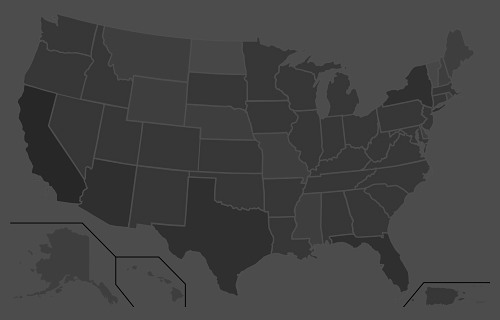“Our added winter moisture and active calling period led to a very long nesting and hatching season, starting in late April and extending into early summer, with chicks hatching as late as early July,” O’Dell said. “From a population standpoint, we are out of a deficit for the first time since 2001-2002. Quail are starting to pop up in places they haven’t been seen in a while.
“If you’ve never had the chance to experience what Arizona quail hunting built its name on, then this would be the year to get out and enjoy it.”
Meanwhile, hunters should note that the season for Mearns’ quail doesn’t begin until Dec. 4. It’s summer rainfall that plays a key role in nesting success and population numbers of this species. After a spotty and relatively weak monsoon across southern Arizona, these birds are likely to be abundant only in pockets that received sufficient precipitation this summer.
A valid Arizona hunting or combination hunt and fish license is required for all hunters 10 and older. Those hunters under 10 must either have a valid hunting or combination hunt and fish license, or be accompanied by an adult who possesses a valid hunting or combination hunt and fish license. Licenses can be purchased online or at license dealers statewide. A youth combination hunt and fish license (ages 10 to 17) is $5.
The general bag limit is 15 quail per day in the aggregate, of which no more than eight may be Mearns’ quail (when the Mearns’ season opens Dec. 4). The general possession limit is 45 quail in the aggregate after opening day, of which no more than 15 Gambel’s, scaled or California quail in the aggregate may be taken in any one day. After the opening of the Mearns’ season, the 45-quail possession limit may include 24 Mearns’ quail, of which no more than eight may be taken in any one day.
More quail-hunting information can be found on the department’s website at https://www.azgfd.com/Hunting/. Another resource for both new and experienced hunters alike is “An Introduction to Hunting Arizona’s Small Game.” Written by Randall D. Babb, the 196-page, full-color book covers where and how to hunt small game birds (like quail), squirrels, rabbits, ducks and geese. It also includes how to prepare and cook your harvest, with illustrations and recipes. The book can be ordered for $16.95 at www.azgfd.gov/publications.
Finally, hunters should check out O’Dell’s techniques for field-dressing quail at https://www.youtube.com/watch?v=3gRwZAcWzzk.
####
Publishers Notes: OUT OF STATE HUNTERS, FISHERMEN & OUTDOOR ENTHUSIASTS; Due to the Covid 19 pandemic, there could be limitations for OUT of STATE hunters, fishermen and other outdoor enthusiasts to include a 14-day quarantine requirement or negative COVID-19 testing alternative. Please check with the State's Department of Natural Resources BEFORE you travel or apply for the 2020 Fall Hunts.
Disclaimer: The views expressed on this site are that of the authors and not necessarily that of TBC Press
TPWD Confirms CWD at Deer Breeding Facilities in Matagorda and Mason Counties
Submitted by: TBC Press
Posted on: 05/17/21
The Backcountry Press
The country's premier daily HUNTING, FISHING & OUTDOOR news in the USA and around the globe. Read whats happening in your neck of the woods & beyond.
© 2020 TBC Press - All Rights Reserved Website Design by:
News # 14370
On March 31, TPWD and TAHC reported two CWD confirmations at breeding facilities in both Hunt and Uvalde counties. The Hunt facility underwent further DNA testing to confirm animal identification and origin, and on May 12 the DNA test results confirmed the deer’s connection to the premises.
“Regrettably, the gravity of this situation continues to mount with these new CWD positive discoveries, as well as with the full understanding of just how many other facilities and release sites across Texas were connected to the CWD positive sites in Uvalde and Hunt Counties,” said Carter Smith, Executive Director of TPWD. “Along with our partners at the Texas Animal Health Commission, we will continue to exercise great diligence and urgency with this ongoing investigation. Accelerating the testing at other exposed facilities will be critical in ensuring we are doing all we can to arrest the further spread of this disease, which poses great risks to our native deer populations, both captive and free-ranging alike.”
TPWD and TAHC continue to work together to determine the extent of the disease within all the affected facilities and evaluate risks to Texas’ free ranging deer populations. Quick detection of CWD can help mitigate the disease’s spread.
CWD was first recognized in the U.S. in 1967 and has since been documented in captive and/or free-ranging deer in 26 states and three Canadian provinces.
In Texas, the disease was first discovered in 2012 in free-ranging mule deer along a remote area of the Hueco Mountains near the Texas-New Mexico border and has since been detected in 228 captive or free-ranging cervids, including white-tailed deer, mule deer, red deer and elk in 13 Texas counties. For more information on previous detections visit the CWD page on the TPWD website.
CWD is a fatal neurological disease found in certain cervids, including deer, elk, moose and other members of the deer family. CWD is a slow and progressive disease. Due to a long incubation, cervids infected with CWD may not produce any visible signs for a number of years after becoming infected. As the disease progresses, animals with CWD show changes in behavior and appearance. Clinical signs may include, progressive weight loss, stumbling or tremors with a lack of coordination, excessive thirst, salivation or urination, loss of appetite, teeth grinding, abnormal head posture, and/or drooping ears.
To date there is no evidence that CWD poses a risk to humans or non-cervids. However, as a precaution, the U.S. Centers for Disease Control and the World Health Organization recommend not to consume meat from infected animals.
####
Publishers Notes: Our country is still battling COVID-19. To avoid the spread of this virus and continue to enjoy outdoor activities, ALL outdoor enthusiasts (man, woman, child) should follow the guidelines set by nps.gov. These guidelines include; social distancing, the Leave No Trace principles, including pack-in and pack-out, to keep outdoor spaces safe and healthy.
TPWD confirms Chronic Wasting Disease (CWD) at deer breeding facilities in both Matagorda and Mason counties. This marks the first positive detection of the disease in these counties.
An epidemiological investigation found that both deer breeding facilities had received deer from a Uvalde County premises where CWD was found on March 29. Postmortem tissues samples were submitted by the permitted deer breeders to assist the Texas Parks and Wildlife Department (TPWD) and Texas Animal Health Commission (TAHC) with the epidemiological investigation. The National Veterinary Services Laboratory (NVSL) in Ames, Iowa, has since confirmed CWD in those tissue samples.
TPWD and TAHC officials have taken immediate action to secure all cervids at the Matagorda County and Mason County deer breeding facilities and plan to conduct additional investigations for CWD. In addition, other breeding facilities and release sites that have received deer from these facilities or shipped deer to these facilities during the last five years have been contacted by TPWD and cannot move or release deer at this time.












